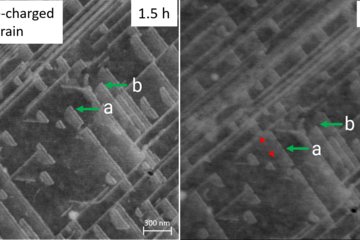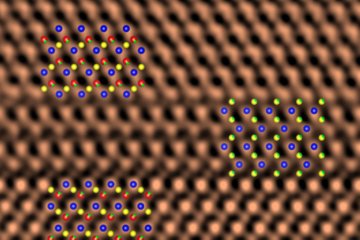All genres
61.
Talk
Hybrid LB-FEM modeling of dense suspensions of deformable particles under shear. SFB TR6 Seminar, Institut für Theoretische Physik II, HHU Düsseldorf, Germany (2011)
62.
Talk
Mesoscopic modeling of red blood cell dynamics. Oberseminar: Theorie komplexer Systeme WS 2010, Institut für Theoretische Physik, Universität Heidelberg, Germany (2010)
63.
Talk
Mesoscopic Modeling of the dynamics of red blood cells. Seminar talk at Ruhr-Universität Bochum, Lehrstuhl für Biophysik, Bochum, Germany (2010)
64.
Talk
Analyzing blood properties by simulating suspensions of deformable particles: Shear stress and viscosity behavior. ICAMS Scientific Retreat, Akademie Biggesee, Attendorn (2010)
65.
Talk
Simulation of multiple deformable objects in flow via LBM and FEM. 19th Discrete Simulation of Fluid Dynamics (DSDF), Rome, Italy (2010)
66.
Talk
Computer simulations of dense red blood cell suspensions. TU Eindhoven,Department of Applied Physics, Eindhoven, The Netherlands (2010)
67.
Talk
Simulation of a dense suspension of red blood cells. TU Braunschweig, Institut für rechnergestützte Modellierung im Bauingenieurwesen, Braunschweig, Germany (2010)
68.
Talk
Collective phenomena in blood flow: An efficient simulation technique. Seminar, Chair For Computational Analysis of Technical Systems, (CATS), RWTH Aachen, Germany (2009)
69.
Talk
Transverse diffusive broadening in pressure driven microchannels: A lattice Boltzmann study of the scaling laws. The XVth International Congress on Rheology, Monterey, CA. USA (2008)
70.
Talk
Diffusion and structural relaxation in sheared glassy systems. The XVth International Congress on Rheology, Monterey, CA, USA (2008)
71.
Talk
Finite size driven droplet evaporation and kinetics of droplets: A lattice Boltzmann study. Sommer Workshop on Nano-& Microfluidics, Bad-Honnef, Germany (2008)
72.
Talk
Some micro- and nanofluidic issues using a free energy based lattice Boltzmann approach: Finite size driven droplet evaporation and wetting dynamics on chemical gradients. Seminar at MPI für Metallforschung, Stuttgart, Germany (2008)
73.
Talk
Lattice Boltzmann simulations of multiphase and multicomponent systems. Institut f¨ur Experimentalphysik, Universität Augsburg, Augsburg, Germany (2008)
74.
Talk
Stability and kinetics of droplets. The 5th International Conference for Mesoscopic Methods in Engineering, Amsterdam, The Netherlands (2008)
75.
Talk
Flows driven by wettability gradients: A lattice Boltzmann study. DPG Spring Meeting of the Condensed Matter Division, Berlin, Germany (2008)
76.
Talk
Diffusion and Taylor dispersion in a simple glass under shear. DPG Spring Meeting of the Condensed Matter Division, Berlin, Germany (2008)
77.
Talk
Lattice Boltzmann studies of non-ideal fluids: Droplet coalescence and wetting gradientinduced motion. Institute for Computational Physics, University of Stuttgart, Stuttgart, Germany (2007)
78.
Talk
Lattice-Boltzmann simulations of multi-phase and multi-component systems. Max-Planck Workshop Multiscale Materials Modelling, Sant Feliu de Guixols, Spain (2007)
79.
Talk
Discussion meeting on Lattice Boltzmann modeling and simulation of multicomponent and multiphase flows. Seminar Talk at TU-Braunschweig, Braunschweig, Germany (2007)
80.
Talk
Diffusion, structural relaxation and rheological properties of a simple glass forming model: A molecular dynamics study. The 5th International Workshop on Complex Systems, Sendai, Japan (2007)











